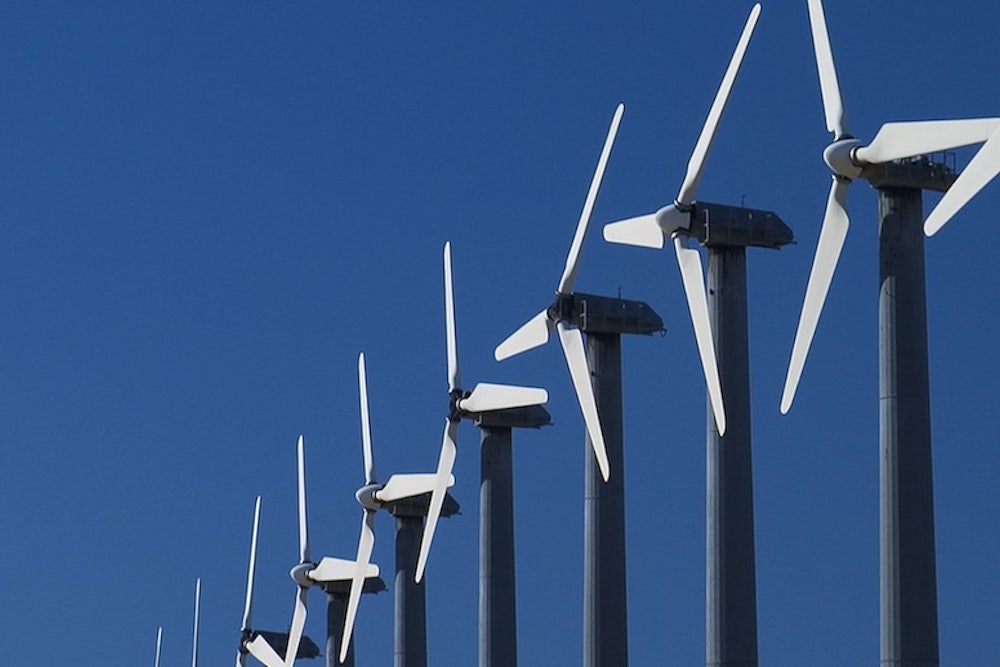Clean energy still counts for a pretty small portion of our energy. While coal provides 39 percent, renewables like solar and wind add up to just 13 percent of our total supply. But policies to improve our energy mix—tax credits for wind and solar, state-level standards requiring utilities to rely more on renewables—are having a real impact. You can see it July's Energy Infrastructure Update, which the federal government just released.
Last month, a full 100 percent of the new electricity generating capacity added at the utility level came from wind, solar, and water in the U.S. This counts renewables that power utilities in the energy grid—but doesn’t include solar installed on the rooftops of homes and businesses. Wind and solar added 379 megawatts and 31 megawatts respectively for July, bringing the two sources' total installed capacity to 6 percent of the utility sector.
But natural gas is still the main new source of electricity this year, even if the oil and gas sector saw no growth last month. Natural gas accounted for 46 percent of new installations for the first seven months of the year, compared to over a quarter each for wind and solar. While natural gas emits less carbon emissions than coal, it's not necessarily "cleaner." Its methane emissions—a greenhouse gas—are 34 times as potent as carbon over the long-run.
FERC’s monthly data tends to be volatile, but it also shows the slowdown in new coal installations. The coal industry added 16 percent of capacity by this time last year. So far this year, coal added zero.
Here’s a look at the data since the start of the year:

The FERC report is only a partial view of the energy sector and its accompanying carbon emissions, because it is tracking maximum capacity, not actual power generation. When you look at how much coal is actually being used by utilities, the outlook is much bleaker. The Energy Information Administration’s short-term outlook from August estimated that emissions from coal will rise 2.7 percent in 2014, in large part because natural gas prices have gone up this year. More expensive gas means it’s cheaper for utilities to use coal. In 2015, EIA estimates coal emissions will decline 2.6 percent.
